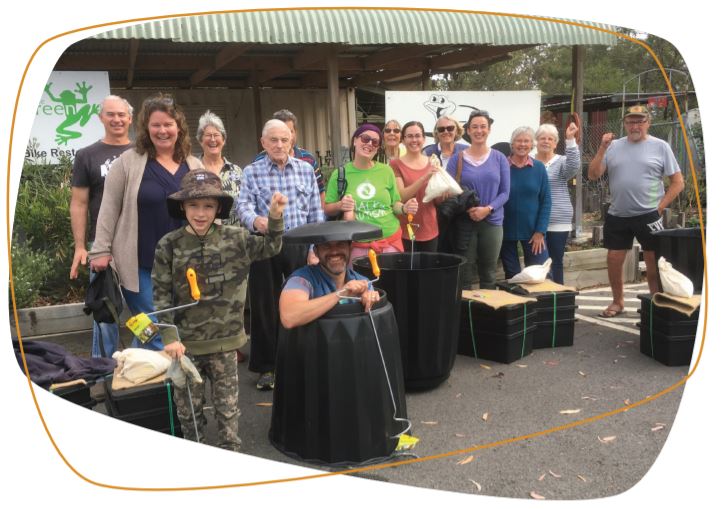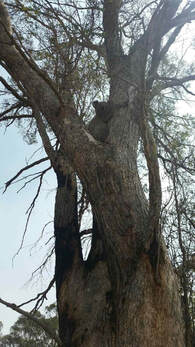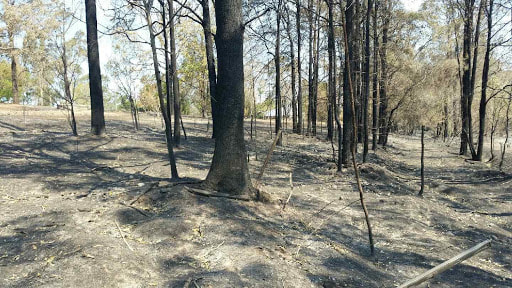|
Annette James, Education Coordinator, Midcoast Council My thanks to Ron, Stef and the team for inviting me to add a few words to this first edition of the MidCoast Growers Network website. Since moving to the MidCoast region a few years ago, I have been on a fascinating journey of discovery about food and production in this beautiful region. In this time the region has been in a sway of drought, bushfires and flooding rains, to both survive, and to recover. When Stef and Ron sought to create a resource guide of local information to build resilience to our changing climate, I knew it could be an important addition for all home and community gardeners. Creating a guide, a series of resources from shared experiences, would benefit not just the lay gardener like myself, but it would connect me to a network of people with inspirational local knowledge. As you know, the structure and composition of soil is a vital life force and that a soil rich in humus and nutrients adds to that vigour. One of my challenges in waste education and resource recovery at MidCoast Council is to build the percentage of waste diverted from landfill. One third of all household waste thrown away, and sent to landfill, is organic and compostable. The problem is, in landfill it contributes to methane production. The organic waste also contributes to landfill leachate. I am not telling you anything new - the environmental risks associated with landfill and the potential impacts are well known. What you may not know is just how important YOU are in reducing organic waste going to landfill. Composting garden and kitchen waste not only provide rich plant food and fertiliser for your garden, but is a vital part of the cycle of sustainability. MidCoast Council’s Scraps to Soil program aims to move this food waste from the household red landfill bin into compost. Whilst COVID-19 has interrupted our Scraps to Soil program, it is hoped we can return to ‘normal’ sometime soon, and extend our workshops offerings through this Network. I welcome the MidCoast Growers’ Guide: Building Resilience to a Changing Climate as an important adjunct of detail and inspiration for MidCoast growers.
Something to consider if you do not have a garden is to get involved in your local community garden. Community gardens provide a great opportunity to learn about food production, composting and much more. I believe it's intrinsically important to be connected to nature and a garden can provide endless enjoyment. The details are here and if I can assist your school or community groups learn more about waste diversion please contact me at [email protected] Spring is a wonderful time to get gardening. Cheers, Annette
0 Comments
Story and pics by Gayle Freeman, Rainbow Flat The 8th November 2019 was a day my husband and I will never forget. We were one of many properties affected by the bushfires of 2019, particularly the fire which spread at a rapid rate from Hillville, south-west of where we live. We live at Rainbow Flat on 2.5 acres surrounded by native flora, many species endemic to our area, and also with a significant koala population. Our south eastern paddock was fringed by old growth native trees, shrubs, groundcovers and natural habitat. The remaining parts of the property consisted of fruit trees – nashi, mango, macadamia, mulberry, olive, apple, pear and avocado. Our vegetable patch grew an abundance of seasonal vegetables, a portion of which was preserved for the pantry. As a gardener, I love to create spaces that transform the mind and soul. Coming from Wentworth Falls in the Blue Mountains, I longed for the beautiful deciduous trees for their colour, form, and free leaf mulch. The front south-easterly facing garden was just that - my mountain garden. The garden consisted of various types of bulbs, flowering trees and shrubs such as claret ash, flowering cherry, flowering pears, maples, camellias, and azaleas, along with a mix of annuals and perennials for our bees and beautiful bird life. Another garden room we created was the tropical garden. This garden's primary role was to shade the house from the westerly sun and create a cool environment away from the burning heat of the late afternoon. It also created a sanctuary for our large frog and bird population. Unfortunately, these gardens are now a memory due to the bushfires destroying 80 percent of our gardens. Fires are incredibly destructive, taking native bush, habitat and fauna species along with the microscopic populations such as insects, which form a valuable link in our ecosystems.
Our koala visits lifted our spirits and gave us a new perspective on the work ahead of rebuilding our gardens. Although daunting, we observed how incredibly resilient the natural environment can be. Our first task was to assess the more dangerous trees of which the root bulbs continued to burn for days later. We then engaged an arborist to assess which trees needed to be removed. Only those assessed to be dangerous were removed and chipped for much needed mulch. We then decided to work on replacing infrastructure such as fencing and setting up a compost system. The next phase was to monitor nature’s recovery. Given the timing of the summer rains we were able to watch as the old growth trees came back and seeds distributed by the bushfires germinate. We left logs where they fell and this provided much needed habitat for creatures when they returned. Most importantly we didn’t touch the ground for 12 months. By doing this we were able to see which trees were going to survive - thankfully most did. Unfortunately, weeds tend to germinate just as quickly after a fire with quick succession of rains. This can be used as an advantage in the stabilisation of the ground, as fire ash can make soils resistant to becoming wet, and can cause run off, hence land degradation. Once our natives started to reshoot, we laid discarded cardboard to control the weeds, and laid a layer of mulch over the top ensuring not to smothering saplings coming through. This was the commencement of the revegetating of our native borders. Our insect population took 12 months to come back. We missed our beloved bees, but they too came back. Our resident kookaburra family were back after a week.
During the last year and a half, our focus has been on mulching and pruning. We have drawn up plans for the gardens based on permaculture principles. Plant selection is ongoing, along with propagation and seed germination. These are cheaper options when starting over for a garden of this size. We know a garden is never complete; it just evolves and is forever changing. A valuable lesson after such a devastating event is to observe the natural environment and be patient. |
AuthorArchives
February 2023
Categories |





 RSS Feed
RSS Feed
